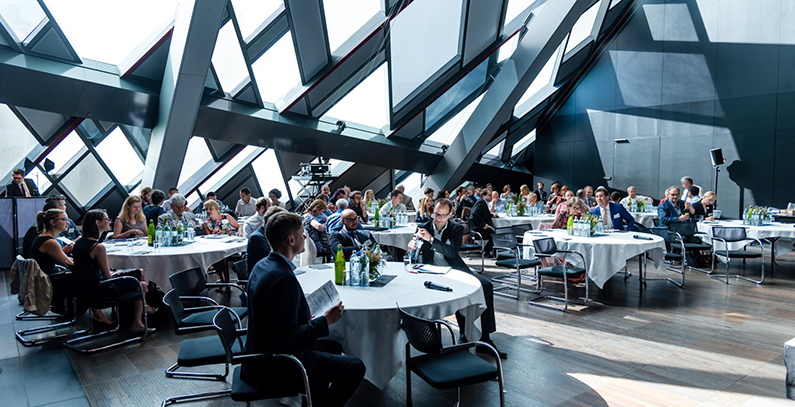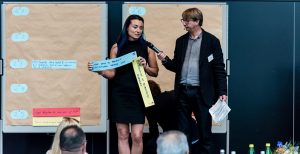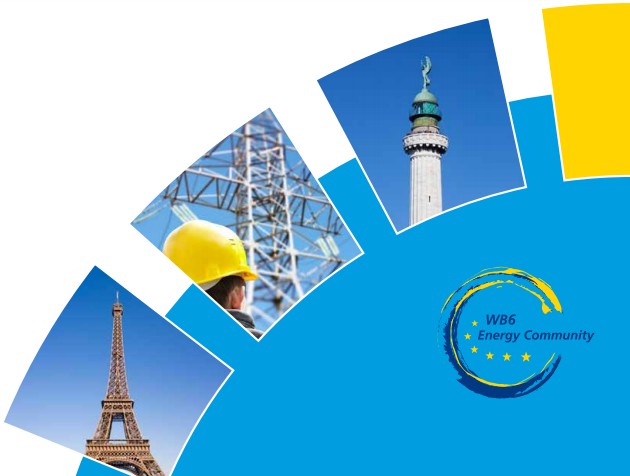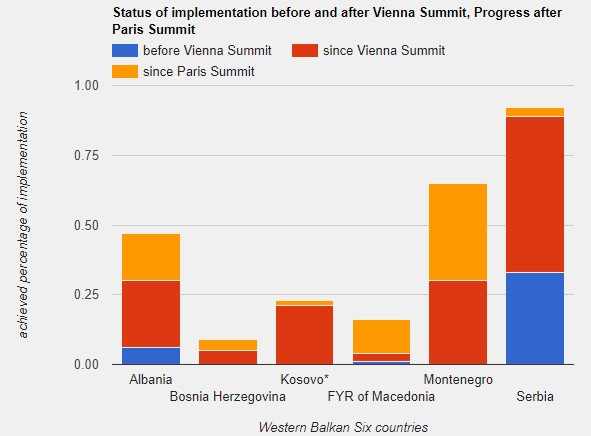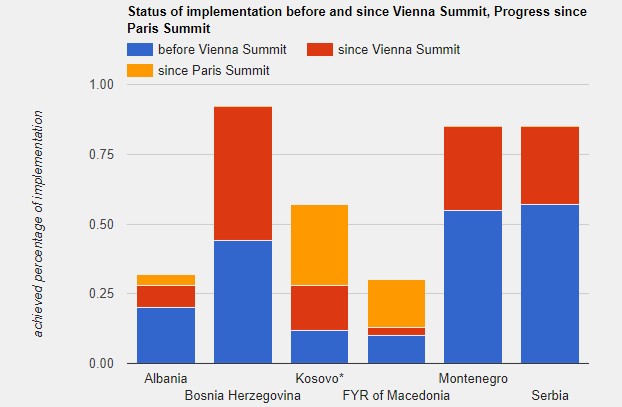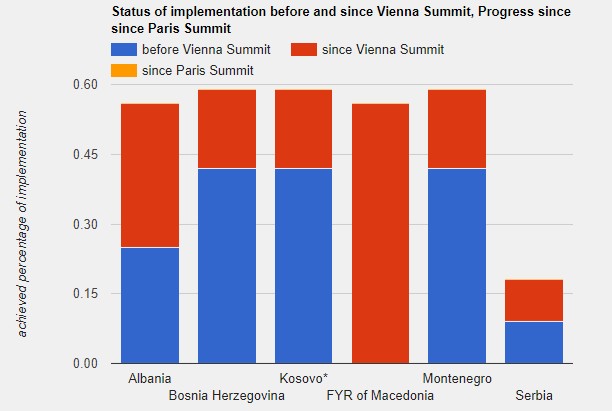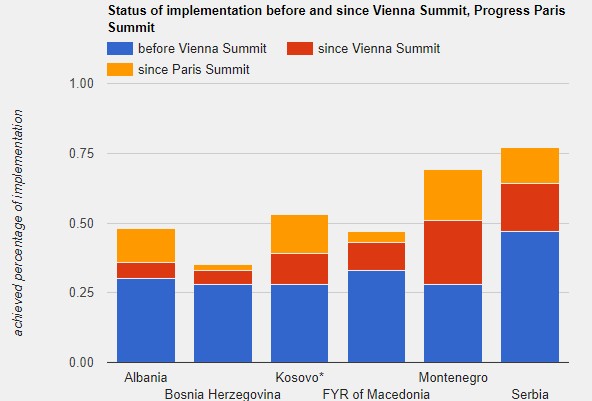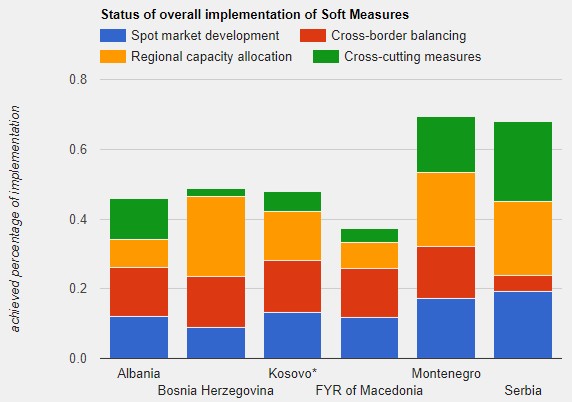The GIZ Open Regional Fund for South-East Europe – Energy Efficiency (ORF-EE), in collaboration with its Facilitating multi-level governance for Energy Efficiency (multEE) project consortium partners and the Energy Community Secretariat, held the Final multEE Project Conference on June 29 in Vienna.
The conference attracted government officials from nine multEE partner countries, as well as representatives from all Energy Community (EnC) contracting parties. The event served as an interactive forum for exchange and joint learning, rooted in a participatory approach. It officially concluded the implementation of the multEE project by summarizing and reviewing all its achievements and impacts to date, while securing a platform for future cooperation.
The event was organized back-to-back with the triannual meeting of the Energy Efficiency Coordination Group of the Energy Community, which brings together EU countries and its neighbors to contribute to an integrated pan-European energy market.
Dirk Buschle, the Deputy Director of the Energy Community Secretariat, opened the conference with a welcome address in which he explained that the EnC has the ambition to follow the EU on its path to fight climate change and reiterated that the EnC is committed to achieving the transition towards clean energy at the same speed as rest of Europe. Buschle used the opportunity to emphasize that “effective horizontal and vertical governance is key to reaching this goal.”

Representative of the European Commission Energy Policy Coordination Unit of DG Energy, Leonardo Zannier, provided at the conference an overview of the Commission’s proposal on governance of the Energy Union. A special focus of his presentation were the integrated energy and climate plans, which are key elements of the governance proposal envisaged to streamline climate and energy reporting requirements. The conference participants were especially interested in the topic of reporting methodologies and related data requirements. Zannier, hence, also used the opportunity to address the proposed time schedule for submission of the first set of reports due by the end of 2018.
The multEE project is led by the GIZ ORF-EE, and implemented together with a consortium of 10 partners from 9 European countries. The consortium integrates various leading institutions working in the field of energy efficiency research, policy formulation and implementation. The multEE project aims at improving the consistency and quality of energy efficiency policy planning and implementation. Main focus is on development and implementation of innovative monitoring and verification (M&V) schemes, and improvement of coordination between different administrative levels in partner countries. The aim is further on concerted planning and projects implementation and active involvement of the civil society, the business sector and various other actors.
ORF-EE developed Monitoring & Verification tool (MVP) finds use in EU
The focus of the conference, among others, was also on the Monitoring & Verification Platform (MVP) – an IT tool for monitoring and calculating energy savings and CO2 emission reduction, which has recently attracted the interest of several EU member states.
Originally developed by the German Government financed Open Regional Fund for South-East Europe – Energy Efficiency for western Balkan countries, the MVP system was enhanced through the GIZ and EU co-financed multEE project, which is implemented as part of the EU Horizon 2020 program. The IT application is based on so called “bottom-up” methodologies determining energy savings from concrete projects without relying on energy statistics (“top-down”), which are quite insufficient in many EU and South-East European countries.
MVP and the bottom-up methodologies proved to be very effective in western Balkan countries for fulfilling the reporting obligations on the implementation of national and local Energy or Climate Action Plans and for improving the information exchange between national and local level. With the possibility to calculate savings by using reference values, it provides a cost-effective alternative to ex-post audits and can also be handled by users with limited technical knowledge.
 The MVP is thus currently being implemented in Croatia, Greece, Latvia, Lithuania, FYR Macedonia and Slovakia and presents a good example where smart and innovative solutions, effectively addressing the issues of efficiency, coherence, transparency of monitoring and reporting of energy efficiency measures, also find use in the EU.
The MVP is thus currently being implemented in Croatia, Greece, Latvia, Lithuania, FYR Macedonia and Slovakia and presents a good example where smart and innovative solutions, effectively addressing the issues of efficiency, coherence, transparency of monitoring and reporting of energy efficiency measures, also find use in the EU.
Benjamin Struss, GIZ ORF-EE multEE Project Coordinator, on the occasion elaborated the project’s main outputs explaining how MVP and the second pillar of the project – improving horizontal and vertical coordination schemes, can actually contribute towards the full implementation of the Energy Efficiency Directive and the Winter Package “Clean Energy for all Europeans”.
This is also reflected in the conclusions from the Final multEE Conference panel discussion stating that the MVP tool offers EU member states and EnC signatories the opportunity to monitor, evaluate and refine their energy efficiency policies with a standardized, coherent and efficient tool. However, use of the MVP system in the mainstream monitoring process and its legal anchoring, and building of necessary capacities for its use, still lies ahead for most of the countries represented. Referring to this, Struss stressed “the work of multEE, although already quite comprehensive and very effective, is a good basis for implementation of further necessary efforts.”
Furthermore, it was concluded that the political momentum for improved multi-level governance for energy efficiency is currently quite positive regarding the introduction of the Winter Package at EU level.


